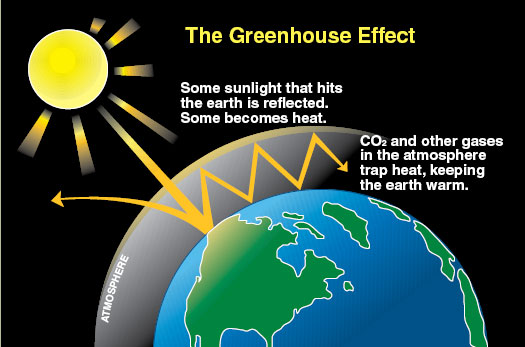Climate Change
Global warming refers to a recent increase in Earth’s average surface temperature. During the past century, the temperature has risen by almost 1°C (about 1.3°F). That may not seem like much. But consider that just 10°C is the difference between an ice-free and an ice-covered Earth.
Effects of Climate Change How has global warming affected Earth and its life? Some of its effects include:
Suspected cause of Climate change Scientists agree that Earth's climate has changed drastically throughout its history, many attribute this to the recent increase in temperature. Unfortunately in the past 100 years we have seen the most drastic temperature change leading many scientists to believe we have something to do with it. As we burn fossil fuels carbon dioxide (CO2) is released which then accumulates in the atmosphere and thickens the layer of green house gasses. This acts as an insulator and does not let reflected heat from the earths surface leave the planet causing increased temperatures ozone depletionOzone is trioxygen, or O3 and makes up a layer of the atmosphere responsible for blocking out UV radiation. CFC's (chlorofluorocarbons) break down O3 and create holes in the ozone. CFC's were found in aerosol cans prior to 1979 and CFC-12 was used in car air-conditioning before 1995.
Increased UV radiation reaching earths surface is a problem because it is a mutagen and can cause skin cancer and other health problems. Since the ban on CFC's much of the ozone depletion issue has subsided and the ozone has even began to repair.
|
Human ImpactFiles:When goats moved in to the Galapagos the hairy bastards ate all the tortoise's food. Something had to be done. Watch this amazing marksman dispatch goats from an airborne chopper.
practice files will be updated shortly
Helpful linksClimate change
Starlings (invasive species)
tuna fishing
|





